Trauma and its Representation in Manga
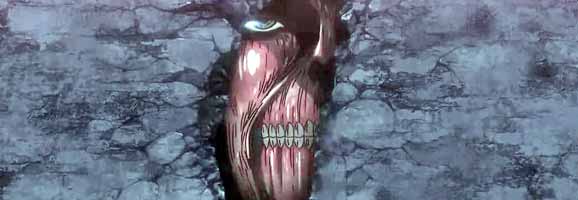
Trauma is an ailment commonly seen in society today. Due to the increase in wars, terrorist attacks, violent crimes, and natural disasters, traumatic experiences and Post Traumatic Stress Disorder (PTSD) are becoming more noticeable in society. The fourth version of The Diagnostic and Statistical Manual of Mental Disorders describes a traumatic event as follows:
(1) the person experienced, witnessed, or was confronted with an event or events that involved actual or threatened death or serious injury, or a threat to the physical integrity of self or others (2) the person’s response involved intense fear, helplessness, or horror.
Although this is unfortunate, all people are susceptible to experiencing trauma and PTSD. The increase of these occurrences in the twentieth and twenty-first centuries is notably making its way into different types of media; people are beginning to speak about trauma. The description above relates to many events that happen in manga, specifically the severity of the traumatic event and the characters’ involuntary responses to said event. These instances accurately show what happens to victims of traumatic events and illustrate the stifling, critical effects of trauma.
Naruto: The Massacre of the Uchiha
One of the most popular and well-known manga in circulation today is Naruto, the story of a quirky but cursed ninja trying to achieve his dream of social acceptance. Since its plot takes place in a world ruled by ninja where combat is lauded, it seems inevitable that the populace would be subjected to extremely violent, traumatic events. This is true in the case of Uchiha Sasuke who is forever changed by the trauma that he experiences at the young age of eight, the massacre of his entire clan by his brother, Itachi.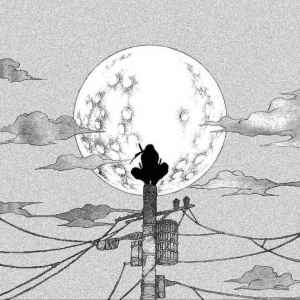
Sasuke, once a positive, out-going child, sinks into himself after witnessing the destruction of all he holds dear. He is overwhelmed by the betrayal of Itachi, the most prominent relationship in his life, and becomes focused on the concept of revenge, which is the driving point of his life for many years to come. This change in personality is an obvious sign of PTSD. Judith Herman talks substantively about this topic in her piece, Trauma and Recovery. She writes that the victim “loses [his] basic sense of self” and is internally, psychologically, and socially damaged due to the effects of the traumatic experience. She also writes that victims are constantly attacked with feelings of helplessness, faithlessness and relationship problems; survivors believe that they can never “be oneself in relation to others” as they attempt to reintegrate into society. Sasuke is so obsessed on the idea of becoming an avenger that all the other aspects of his personality wither away. He becomes an introvert who thinks about his trauma everyday and rejects society in an attempt to isolate himself from others so he can achieve his goal. Sasuke continues to live with his damaged self throughout the course of the manga, drifting slowly into darkness and erasing all his hope of becoming whole again.
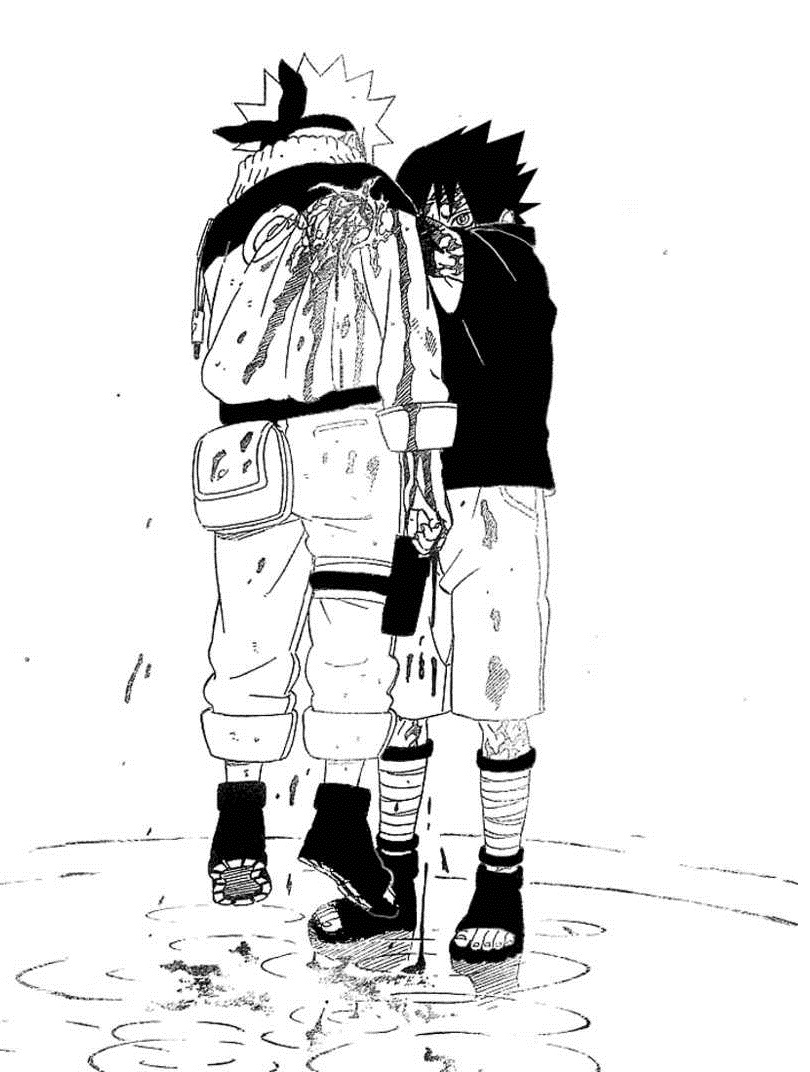 There is another aspect of PTSD that is seen in the character of Sasuke: his dependent, dysfunctional friendship with Naruto. Herman believes that “trauma impels people to withdraw from close relationships and to seek them desperately.” This is precisely the relationship these two ninja have. As rivals, they are always pushing each other in a competitive environment and, at times, show their bond of friendship and brotherhood. Eventually Naruto gets over their childish rivalry and begins to see Sasuke as a true companion, but Sasuke cannot bring himself to do the same. He is still held back by his lack of trust in society due to the betrayal of Itachi. He is also unable to relate to Naruto, even though their situations are very similar, because he sees himself as an outsider who cannot become an active part of society. These feelings along with his growing anger and jealousy at Naruto’s successes act as a catalyst for his complete departure from society and Konahagakure. However, he still cannot bring himself to kill Naruto after his victory at The Valley of the End. There is still a desire within Sasuke to go with Naruto. He wishes for a close relationship, one he has not had since the death of his family, but the trauma holds him back from acting on this necessity. These inner conflicts are due to the psychological scars of his trauma; he physically cannot allow himself an intimate relationship. He shows how a victim can become a recluse who gives up the hope of ever reintegrating into society and, in response, runs from it.
There is another aspect of PTSD that is seen in the character of Sasuke: his dependent, dysfunctional friendship with Naruto. Herman believes that “trauma impels people to withdraw from close relationships and to seek them desperately.” This is precisely the relationship these two ninja have. As rivals, they are always pushing each other in a competitive environment and, at times, show their bond of friendship and brotherhood. Eventually Naruto gets over their childish rivalry and begins to see Sasuke as a true companion, but Sasuke cannot bring himself to do the same. He is still held back by his lack of trust in society due to the betrayal of Itachi. He is also unable to relate to Naruto, even though their situations are very similar, because he sees himself as an outsider who cannot become an active part of society. These feelings along with his growing anger and jealousy at Naruto’s successes act as a catalyst for his complete departure from society and Konahagakure. However, he still cannot bring himself to kill Naruto after his victory at The Valley of the End. There is still a desire within Sasuke to go with Naruto. He wishes for a close relationship, one he has not had since the death of his family, but the trauma holds him back from acting on this necessity. These inner conflicts are due to the psychological scars of his trauma; he physically cannot allow himself an intimate relationship. He shows how a victim can become a recluse who gives up the hope of ever reintegrating into society and, in response, runs from it.
Attack on Titan: The Evident Destruction of Humanity
Most manga fans know about Attack on Titan. Heavily popularized by its anime, it has become one of the most well-known due to its high intensity plot, blood and gore, and unpredictability. There are a myriad of traumatic situations for the characters and the readers of Attack on Titan, but the events that occur prior to the start of the manga ask some interesting questions about trauma and society.
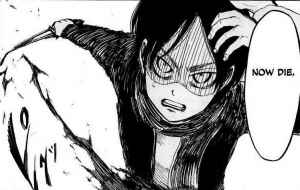
Eren, the main character of this piece, is angry at the world many years before the manga begins. Even while his country was living in a world of relative peace due to the 100 year hiatus of the Titans, Eren has rage instilled with him at a young age; he promises the destruction of the Titans constantly in his childhood and relentlessly murders Mikasa’s attackers at the age of eight. But, for a child who grew up during a fairly peaceful time, why does he have such a fervent rage within him? He is the victim of a cultural trauma that was socialized within him and greatly affects him due to his role in society.
Jeffrey C. Alexander writes that cultural trauma “occurs when members of a collectivity feel they have been subjected to a horrendous event that leaves indelible marks upon their group consciousness, marking their memories forever and changing their future identity in fundamental and irrevocable ways.” This definition is easily applied to the world of Attack on Titan. The Titans have made themselves the most dominant force on Earth, massacring humans to the point of causing them to recluse and cage themselves away. Humanity is being toyed with, trivially murdered, and robbed of any and all dignity. Living in this environment for hundreds of years has caused the generations to adopt the “indelible marks upon group consciousness” and, as a result, carry on the fear and helplessness of their ancestors. Eren’s country, even though living safely for a long stretch of time, is still under constant stress and fear of attack. Every day the people wake up and must contemplate if they will live to see tomorrow; the evident destruction of humanity always hangs over their heads. This is the environment Eren grows up in; the cultural trauma encompassing the youth of the country and affecting its “future identity.”
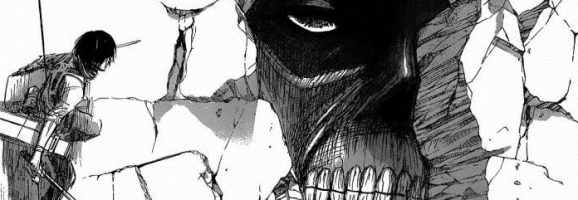
But there is also another aspect that attributes to Eren’s childhood anger and fear; he is the son of a doctor, a man who is exposed to many of the country’s wounded, ill, and deceased. At a young age Eren was most likely witnessed horrible injuries and traumatizing things just from living in the home of a doctor in a war-torn world. Children are the most susceptible to trauma so these things easily augmented his innate societal trauma and, knowing these injuries are caused by the Titans, activated his hatred for the Titans during his early childhood. This is why the readers are introduced to a hostile, violent little boy who, although has never experienced combat, witnessed it and lives in its aftermath. Eren is the victim of trauma before the manga even begins and, as readers know, will only be faced with even more horrendous, unspeakable acts for the rest of his life.
Akuma to Love Song: The Suicide of Anna Kawai
It is usually unexpected to find very violent or horrific acts in shojo manga but Akuma to Love Song breaks the stereotypical mold. Although its main story is simply about an unusual girl trying to fit into a new high school, it covers many dark, matures themes. These themes can be found in the back story of Kawai Maria, the protagonist, and the violent, mysterious past she experiences with her mother, Anna, who commits suicide.
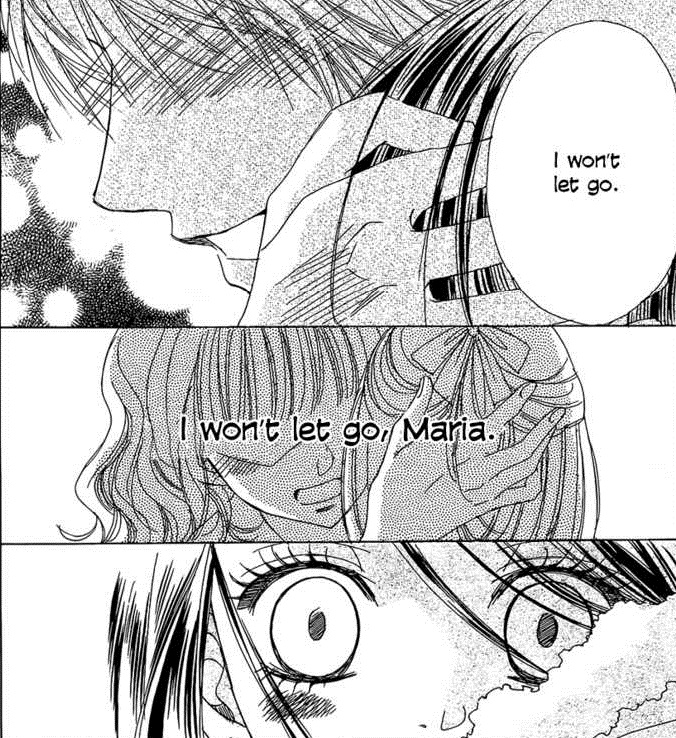 Maria is a product of Anna’s rape by an American naval officer. This social stigma brings Anna grief as she carries out life as a single mother. She is subject to ridicule, vandalism, and is ousted by most of society. Maria also becomes the target of bullying at a young age and constantly gets into trouble at school. Anna feels that her social hermitage is caused by Maria’s existence and begins caving in under the stress. Eventually, she makes a decision for her and her daughter: they would be better off dead. Anna slits her wrists and tries to strangle Maria during the process, but is unsuccessful in killing her and dies with Maria in her arms. However, Maria does not remember her mother’s suicide until many years later. This is her first symptom of PTSD: dissociation. Patricia Resick writes in Stress and Trauma that traumatic experiences may spur certain hormones that “interfere with the storage of explicit memory that…allows the organism not to consciously experience or remember the overwhelming traumatic event, causing symptoms of dissociation or amnesia”. In many cases, this causes the memories of the traumatic moment to be fragmented; the event at hand is so unbelievable that the brain cannot physically process it. This gives Maria temporary amnesia and she loses all memories of her mother’s death until she experiences a flashback years later.
Maria is a product of Anna’s rape by an American naval officer. This social stigma brings Anna grief as she carries out life as a single mother. She is subject to ridicule, vandalism, and is ousted by most of society. Maria also becomes the target of bullying at a young age and constantly gets into trouble at school. Anna feels that her social hermitage is caused by Maria’s existence and begins caving in under the stress. Eventually, she makes a decision for her and her daughter: they would be better off dead. Anna slits her wrists and tries to strangle Maria during the process, but is unsuccessful in killing her and dies with Maria in her arms. However, Maria does not remember her mother’s suicide until many years later. This is her first symptom of PTSD: dissociation. Patricia Resick writes in Stress and Trauma that traumatic experiences may spur certain hormones that “interfere with the storage of explicit memory that…allows the organism not to consciously experience or remember the overwhelming traumatic event, causing symptoms of dissociation or amnesia”. In many cases, this causes the memories of the traumatic moment to be fragmented; the event at hand is so unbelievable that the brain cannot physically process it. This gives Maria temporary amnesia and she loses all memories of her mother’s death until she experiences a flashback years later.
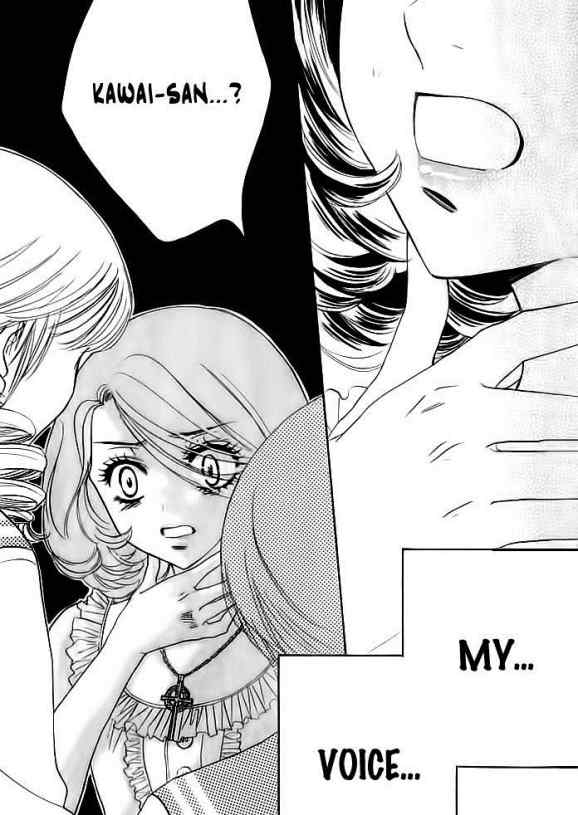 During this flashback, triggered by a hug similar to the embrace her mother gave her during the strangling, the fragmented memories return to Maria. She starts to remember the event through nightmares and flashbacks, the process of her fragmented memories returning to her in pieces at a time, until the experience returns to her mind as a whole. The memory of the trauma is so great that Maria is harshly affected; she tries to kill herself and loses the ability to speak. These responses are typical for remembering a trauma event. The pure brutality of the memory can easily cause a person to experience severe depression and the loss of voice is a physical ailment caused by the brain in response to dealing with traumatic memories. Maria endures some of the more physical effects of trauma through her dissociation and loss of language and suffers through the memory of her trauma during the manga in order to get her voice back.
During this flashback, triggered by a hug similar to the embrace her mother gave her during the strangling, the fragmented memories return to Maria. She starts to remember the event through nightmares and flashbacks, the process of her fragmented memories returning to her in pieces at a time, until the experience returns to her mind as a whole. The memory of the trauma is so great that Maria is harshly affected; she tries to kill herself and loses the ability to speak. These responses are typical for remembering a trauma event. The pure brutality of the memory can easily cause a person to experience severe depression and the loss of voice is a physical ailment caused by the brain in response to dealing with traumatic memories. Maria endures some of the more physical effects of trauma through her dissociation and loss of language and suffers through the memory of her trauma during the manga in order to get her voice back.
There is a relevance to presenting trauma in manga. It shows that even the most powerful, determined and super-human people can still be scarred by the atrocities of humanity; that life can be extremely excruciating for even the most fortunate and well-prepared. The traumas of these characters also occurred while they were children, showing the susceptibility of children to intense violence and hopelessness. After the traumatic event, these characters do not return to their normal lives after experiencing trauma. Sasuke, Eren, and even the beautiful Maria are victims of the traumatic and are forced to live with their scars since there is no cure or recovery from PTSD. Just like victims in reality, their brains are permanently scarred and these fictional characters will live with the memories of their trauma for the rest of their lives. If anything, these instances show the fragility of humanity and make the reader conscious of trauma victims and educate them on victims’ struggles in fiction and reality.
Works Cited
Alexander, Jeffrey C. Cultural Trauma and Collective Identity. Berkeley, CA: U of California, 2004. Print.
Herman, Judith Lewis. Trauma and Recovery. New York, NY: Basic, 1992. Print.
Resick, Patricia A. Stress and Trauma. Philadelphia, PA: Psychology, 2001. Print.
What do you think? Leave a comment.
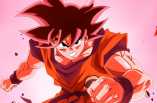

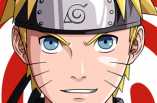


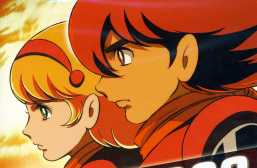

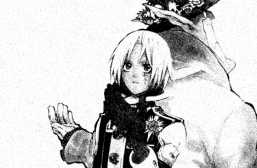
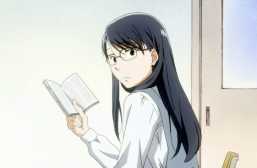
The only traumatic scene in AoT was Eren’s mom death, and it’s easily one of the best deaths in any manga/anime. The others are just meh, they seriously need some characters development as filler episodes for those characters who’ll die next, hell even Eren’s death wasn’t sad or tragic, I was like “WHAT? THEY KILLED THE MAIN CHARACTER?!!!” but didn’t get dat feeling from the first episode.
Deaths are poignant when you know the characters and you want to see them survive. At this point in the series, it’s the opposite. You’re expecting people to die, and you’re shocked to see them live. It’s just…eh.
To date there’s no creepier titan than the one that ate mama.
/ayers
I thought The Uchiha Massacre was overkill. For the majority of the series, it was necessary to prevent the coup, but I am starting to think otherwise. As a spy for the leaf village, would it not be simple for Itachi (or other anbu) to just undermine the coup in one way or another…
It was not one of the Hokage’s greatest decisions…
Trauma is dealt with good in most well written Mangas, but sometimes, the setting doesn’t allow us to really get emotionally invested with the characters up to the point of the trauma.
Intriguing take on trauma and Manga.
As an author of a recently published graphic novel, I think what makes trauma an effective tool within the Manga genre is its very real and visceral effect it has to the human condition. That is to say, I believe within the human psyche there is always a tiger lurking in the darkness. As a graphic medium, Manga is geared toward a powerful exposition of trauma through dramatic and sometimes brusque graphics.
I suppose an ancillary question lends itself as further discussion of what you have begun to ask: do artists seek to use Manga as a springboard to depict trauma, or does trauma naturally come from the medium of Manga by its very nature?
I believe it can go either way. Mangaka can choice to incoporate trauma to educate or make a point. But I personally believe that its innate in manga because the stories are about people and people are easily broken. If manga truly reflects humanity then some trauma must be involved because it shows the fragility of the human psyche. It shows the complexity of humanity and human nature. Thank you for your comment!
This was a very interesting read! Even as a psychology major, I never really thought to fully connect anime and trauma. I have definitely noticed small fragments, but the unfortunate thing about most anime/manga is that trauma seems a little overlooked and, though characters seem to show pain, emotional costs are looked over a bit. (yea I know, it’s a plot twist or necessary for events to occur- but trauma shouldn’t be so easily dismissed)
Thank you for also weaving in definitions from the DSM and other citable works~
Most horrific traumatic events happen in shonen manga, so the emotional aspect is usually overlooked because, stereo-typically, boy’s aren’t very susceptible to it. But I agree with your comment completely! Thanks for reading, Yomi~
I love this. I particularly liked that you pulled from the Manual of Mental Disorders. Those statistics are scary. I also liked that you brought in a shojo manga. Shojo is often overlooked. Fascinating article!
Shojo is deeper and darker than what’s on the surface of its plot! I wanted to include all genres of manga. I’m glad you appreciated it. Thanks very much for reading~
Nice article! I really like your pointing out the idea that even if characters are often portrayed as “super-human” in manga, they’re still “human;” it’s interesting to consider as it shows that a person’s abilities doesn’t necessarily define who they are and keep them static, but rather it is the sum of people’s experiences which actively shape who they are and what they’ll become.
Clare from Claymore, had her mother figure die right in front of her from decapitation. That’s one I remember.
I believe the entire massacre of the Uchiha clan could have been easily avoided. Well, at when the massacre happened, Hiruzen was getting old and had just been reinstated as Hokage because of Minato dying.
After that attack Hiruzen and the village elders believed that the Uchiha perpetrated the attack and tensions rose. Hiruzen had Itachi working for him as an ANBU operative. Hiruzen must have known he possessed the will of fire because he was using him to spy on the Uchiha for the sake of that village. And Hiruzen most definitely knew how powerful he was. Hiruzen should have offered to the Uchiha that Itachi would become the Next Hokage because of the need for a successor. I think we all could agree Itachi would have been a good Hokage.
I must agree with you and it is pretty sad since that is what they wanted. A coup does not mean a civil war; a coup means government takeover. Fugaku wanted to be Hokage. This would have gradually led to Itachi being Hokage. Instead, Itachi was used as a pawn to slaughter his own kin.
Danzo would not let that pass, he is too paranoid for that to happen.
Do not think the village would have liked that though. Though he is accomplished, it was already quite apparent that the Uchihas were not a liked clan.
I like your concept of the “Super-human” in manga strictly because it is so relevant to comic books today, or even our perceptions of our role-models in life. Our role models are often seen as “perfect” and incapable of making mistakes, and superheroes (like superman) are often seen as utterly incapable of fault. However, even so they are vulnerable to psychological trauma. While this approach is harsh it is always fascinating to read in one’s favorite comic. Great article 🙂
Thanks Jermarc! I always appreciate your comments and input. I feel that the humanity of the characters is what draws us all to anime and manga; it’s fictional but that fiction shows fact. Thanks for reading~
Shigofumi. While the traumatic experience is revealed a little later, it is crazy.
“Loveless” is really sad. Kid’s brother is brutally murdered, his mom is physically abusive, he lost all of his memories. It nearly made me cry several times throughout the story.
I thought Eren’s death was very epic and shocking, although my thoughts afterwards were “well I know they’re gonna bring him back, but I can’t imagine how…”. When they showed the rebel titan I figure everybody know what was going on, and since they did bring him back they made it not tragic.
Provacative topic, Mary. I was intrigued by it at first glance and I thought you illustrated your points in both the manga and through research excellently. One thing that bothered me and was a point of disagreement for me was your conclusion of this piece. The use of the word “victim,” like you later explicate, implies that “there is no cure or recovery from PTSD.” I would have to disagree in the sense that although you can’t be cured of your trauma, you most certainly can recover from it. The term I have become familiar with is “survivor” because it indicates that your trauma is apart of you, of course, but you can overcome it. I think in manga the aspect of a survivor is strong in characters like Naruto and Mikasa (of Attack on Titan) who draw strength from their past experiences with trauma in order to better themselves and the lives of the people they care about. In Japan, manga is considered equal in literary merit as a novel, and I agree with you wholeheartedly that reading manga can help a reader gain consciousness of serious and real issues like trauma, self-harm, depression, and violence. Thanks for writing, I enjoyed this article very much.
Firstly, thank you for your compliments and for reading my article. I’m glad you enjoyed it. People may be able to overcome trauma but it cannot be cured and although people can recover somewhat, they cannot recover fully. Those marks are left on the psyche forever. Even though Naruto and Mikasa do not let it affect them outwardly, their traumas are still something they have to carry for the rest of their lives. That is what I meant in my conclusion; there is no white out or eraser for trauma. But I do agree manga is such a wonderful medium and truly expresses so much~ thanks again for reading and for your detailed comment.
Beautiful analysis. Good work friend.
Wow, thanks so much~~
The thing with Attack On Titan is, yes, it does kills off many characters, but almost all of the characters it kills off are disposables. Thus it’s roughly as grimdark as your average episode of Star Trek or whatever. Gantz, Evangelion, Muv-Luv, and Blue Gender, had a tendency to characterise people before sending them through the meat-grinder. In comparison, truth be told, I can’t even recall the name of any character killed in Attack on Titan.
Have you heard about SAIKANO? It starts off as a typical love story between a boy and a girl, they fall in love but the girl becomes the army’s “ultimate weapon” by mutating her body and making her transform into a huge robot ship thingy, and in the end, everybody dies.
Some other traumatic experiences in manga to address would be Kamina’s death in Gurren Lagann and its impact on Simon, Yoko, and Kittan; the deaths of Lelouch’s mother, Shirley’s father, Shirley, Euphemia, and Rolo in Code Geass; and the merciless beatings of Paranoia Agent and how they structure society from then on.
Just realized that I listed a bunch of anime instead of manga. Still worth examining these works, though.
Hahahah that’s okay. TTGL is a great example though. Simon does show some pretty intense signs. I love that show! And I’m halfway through paranoia agent and I can definitely see what you’re talking about. There’s a great article on it called “Paranoia Agent: A Case-Study of Fear and Repression” on this site if you’re interested! It’s a great read~
I have not seen this, but as a trauma psychologist, I appreciate different views and application of trauma.
Thank you very much for taking out time to read this!
I find trauma in the manga to really make me sensitive to real life issues. In AOT when I saw Erens mom being eaten or when Lavis whole team was wiped put, it really impacted my heart. I think trauma in manga can be a great way to get in touch with feelings or at least make them more realizable.
These aforementioned manga represent severe traumatic events, which manifest as PTSD symptoms in the protagonists, but I think that trauma, as a very broad concept, has made its way into many, many manga stories. For example, well known psychologist Peter Levine states that there are many instances of subtle trauma including: “Minor car accidents, especially those that result in whiplash, invasive medical and dental procedures, particularly when performed on children who are restrained or anesthetized, falls and other so-called minor injuries, especially when children or the elderly are involved (esp. when “knocked out” or concussion,) natural disasters, including earthquakes, hurricanes, tornadoes, fires, and floods, being left alone, especially in young children and babies, and, sudden loud noises,(explosions, fireworks gun shots) especially in children and babies.”
So, you have very severe cases, I’m thinking Akira, and (the nuclear holocaust & subsequent experiments) as well as the examples in this great article, and then there is a subtler case such as Fujimura’s secondary-trauma working as a police officer & caring for Shiro in Tekkonkinkreet.
This is kind of neat to read in tandem with Jamie Tracy’s piece “Death as Inspiration in Comics”. While his article dealt with the idea that super heroes rise above the tragedies they face, it’s neat to see that it seems like Manga is almost more tragic because the characters get hurt so much more or the tragedies themselves are so painful. This is a really great article Mary, and thanks for the recommendations you provided.
Interesting that you point out trauma as being a way that makes characters more relatable. I’ve noticed that having a dark backstory tends to make a character fanbase grow, and I wonder if this has anything to do with it. I don’t know if trauma is necessarily on the rise, but people like characters who have suffered because they become more realistic, gaining another psychological facet. If their condition improves and they are able to become stronger, then fans find strength in them.
I think it is a fallacy to say Sasuke “became introverted” after trauma, because it suggests that introversion is a negative thing that happens to you. But you are right to say that he withdrew himself from society, and made revenge the focus of his life.
I like the quotes you used about collective ptsd affecting humans in Attack on Titan. I had never thought about that before, but it makes sense–especially at the family level. Since Sasuke believes himself to be the only survivor, he finds it harder to even find form his identity separate from the trauma.
Obviously some form of selectivity has to be exercised in choosing the series one will directly discuss in such an article, but Berserk is pretty much THE manga for illustrating this theme in a mature fashion.
One of my favorite portrayals of trauma and it’s effect on the persona was probably the tortures of both Jason(Yakumoo Oomori) and Ken Kaneki. While the manga had portrayed it pretty well, the anime was able to show the changes in Kaneki in a very condensed but well paced format. Basically you are able to see Kaneki adapt similar personality traits to Jason (who was previously tortured). I don’t know, watching the scene was so interesting and indescribably fascinating.
In addition to Tokyo Ghoul, Kisejuu shows a similar change in the protagonist. Since I’m not on for spoiling the plot, I won’t mention that here ^_^, but definitely watch the show! I read the manga and it was phenomenal!
As always, great article Mary!
Even though manga is entertainment for the most part, some accurately represent real-life situtations, like trauma. I like how majority of your examples incorporate supernatural/imaginary elements but still manage to portray the effects of trauma. Other notable manga are Tokyo Ghoul and Loveless. Great article overall!
I’m somewhat disappointed that Berserk was not included in this discussion. Guts, the main character, is presented immediately in his adult, heavily traumatized state, before we are shown the childhood events that eventually led to this outcome. It explores the consequences of rape, sodomy, abuse, being orphaned, and many other things through Guts’ own life, and the lives of the people he interacts with.
Granted, the manga makes a gimmick of over-the-top death and destruction (see also, a literal barn full of burning babies), but that doesn’t make the consequences any more real. There is (SPOILER) the rape of Guts’ love by his commander/best friend, which leaves her in an almost child-like state of fear for the remainder of the manga, which had a very powerful impact for me personally.
May be worth looking into for further research or consideration!
I find âge’s visual novels are quite advanced on the subject of PTSD. Kimi ga Nozomu Eien (adapted in anime form and titled Rumbling Hearts in the states) did a convincing case with the trauma of its characters, and the visual novel Muv-Luv Alternative must have the most traumatic representation of PTSD I have ever seen or read. It’s almost as if you were synched with the character experiencing it.
Funny thing is, Attack on Titan’s author was largely inspired by Muv-Luv when he created his manga.
Trauma is definitely associated with PTSD but I don’t know if they’re 100% synonymous. Trauma can mean a variety of things but I digress. I think the manga can also show post recoveries of PTSD as well right? I haven’t read the later 2 manga but in Naruto, Sasuke eventually comes to terms with everything and there is an ability to heal. PTSD is highlighted well in these manga, (At least these excerpts) and can also show forms of dealing with it.
Powerful article. You did a great job exploring different types of trauma and used good sources in this piece. Well done!
At the very end you say that even the most fortunate and well-prepared suffer from traumatic events, but you never touch on who were fortunate and how or who was well-prepared and how. I think that would have made for a very interesting conclusion if you had delved into that more. I would also be careful when saying there is no cure for PTSD because, even though there is no cure, there are ways to work through it in group therapy and one-on-one therapy. However, I thought this piece was very thoughtful and well written. Your examples were great and the use of other professional sources really helped in understanding where you are getting your information. I also really appreciated your in depth psychoanalysis of Eren because I feel that most people view him as just a brat when they first begin to read the series. This gave a whole new light to him, I think, that will allow new readers and maybe some old readers understand Eren more.
Trauma is a very serious topic that affects a multitude of people. Like other medium manga has proven to be a good way to express trauma and to raise awareness to it. Yes, most of the events in manga and the media as a whole are fantastical in that they could never happen as they did on screen or in print. However, there are real traumas. I believe that all of the made up traumas in media have roots in real traumas and fears that are alive and in societies today. Are titans going to destroy mankind by eating it, probably not. However, there are people that fear that the human race will someday become extinct. I really enjoyed reading your article.
I got the first two examples and thought you were spot on. The third looked like shojo and I try to stay away from that demographic.
Excellent work on analyzing three traumatic instances in manga. The death of Eren’s mom was especially devastating.
I think Gaara’s character and the effect of trauma (from the numerous attacks sanctioned by his father to have him killed) in the evolution of his character, is also worthy of analysis.
I haven’t seen the other two, but I do get the “Attack on Titan” reference. Personally, I think it’s better than any monster movie in existence, because it treats the story like real events involving trauma. Mikasa’s another character suffering PTSD. People usually hate her obsession with Eren, but after watching her parents killed a young age, it makes sense she would protect the last person who became her family. She is what she is now because Eren saved and inspired her.
I think your analysis of Sasuke was especially well done. Personally I think that is what makes the fight between him and Naruto as enemies for the first time really impactful. Because while Sasuke was pushing people away and distrusting others; Naruto was seeking a way to bring Sasuke back into society and show him that there ARE people who care for him out there. Very well done article!
I believe the analysis of trauma in many of our manga today (including your great examples) is in part due to a new adherence and understanding of mental health producing a new level of deconstruction when it comes to the lasting effects of events most horrible. While often we see such traumatic experiences cause characters to grow stronger (sometimes on the spot) the other side of the coin is when characters are racked so deeply by such events that it consumes their very being (Sasuke, Eren, etc.)
I’m glad you included Sasuke in your analysis here. People don’t realize how harrowing a genocide would be. It’s something people from sheltered backgrounds and communities can’t even imagine; and that makes Sasuke’s ordeal especially heart-wrenching. Great article.
I definitely see that the action and drama of Attack on Titan are what have made this show renown. The trauma probably contributes to this.
Because it’s not from our perspective, it can be difficult to sympathise with Sasuke’s pain. Pointing out evidence and supporting it with scientific evidence made it really easy to understand Sasuke’s character and the effects of trauma on him. The article is clear and fantastic!
I think the analysis on Eren’s character was great, and even made me realize things that I didn’t think about. I’ve always just assumed he was an angry child, but looking at his environment, as well as his father’s occupation, really explain why he was the way he was. He also had Armin’s influence, who told him about the ocean and more about the outside world, which added to his anger and desire to defeat the titans. Especially for such a young kid, this is a very difficult situation.
What about the trauma for Itachi, who only did what he was told, and then had to live with that horror of a trauma himself and ended up choosing to die?